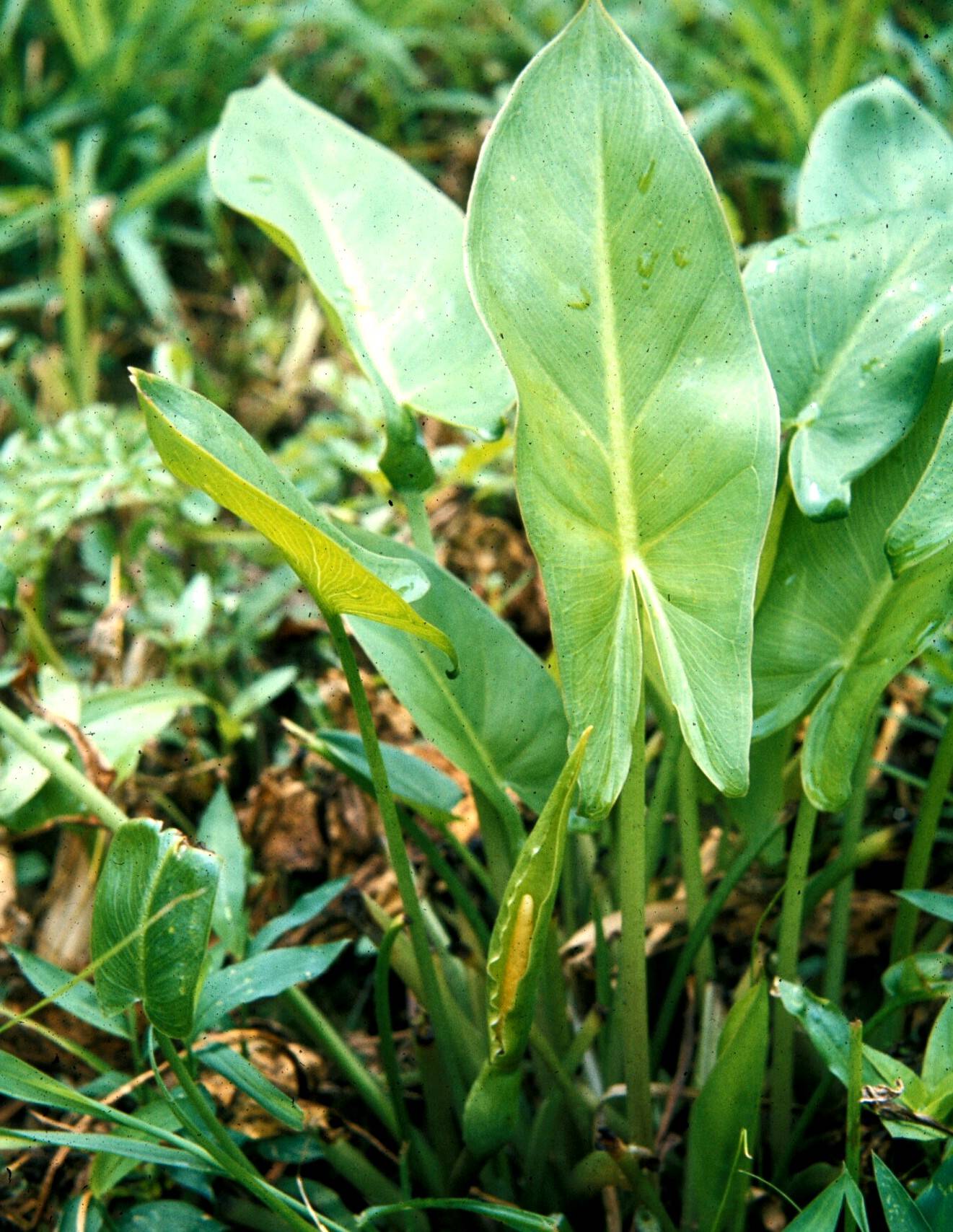
|
Family: Araceae |
Only one species of Peltandra, P. virginica, (with two subspecies), was recognized by W. H. Blackwell and K. P. Blackwell (1974), a treatment followed by some botanists. They synonymized P. luteospadix with P. sagittifolia, based primarily on their contention that no Peltandra species have red fruits, and called that taxon P. virginica subsp. luteospadix (Fernald) Blackwell & Blackwell. All of the specimens cited in their treatment of the genus are P. virginica. The two species of Peltandra can be distinguished not only on reproductive charactersistics, but also on features of leaf venation. Fossil leaves congeneric with modern Peltandra are known from very late Paleocene through early Eocene deposits of North America. Peltandra is one of two genera of Araceae endemic to the flora area (the other is Orontium).
Fls covering all or most of the slender spadix; spathe elongate, oblong, convolute below and covering the pistillate fls, opening distally and exposing the staminate ones; perianth none; ovary unilocular, subtended by a few white staminodia; ovules 1-few; stamens 4-5, embedded in a sterile ovary; perennial from thick fibrous roots, with long-petioled, basal, 3-nerved, pinnately veined lvs and a long scape bearing a slender, green or greenish spathe. 2, Atlantic N. Amer. Gleason, Henry A. & Cronquist, Arthur J. 1991. Manual of vascular plants of northeastern United States and adjacent Canada. lxxv + 910 pp. ©The New York Botanical Garden. All rights reserved. Used by permission. |
This project was made possible in part by the Institute of Museum and Library Services [MG-70-19-0057-19].
Powered by Symbiota



